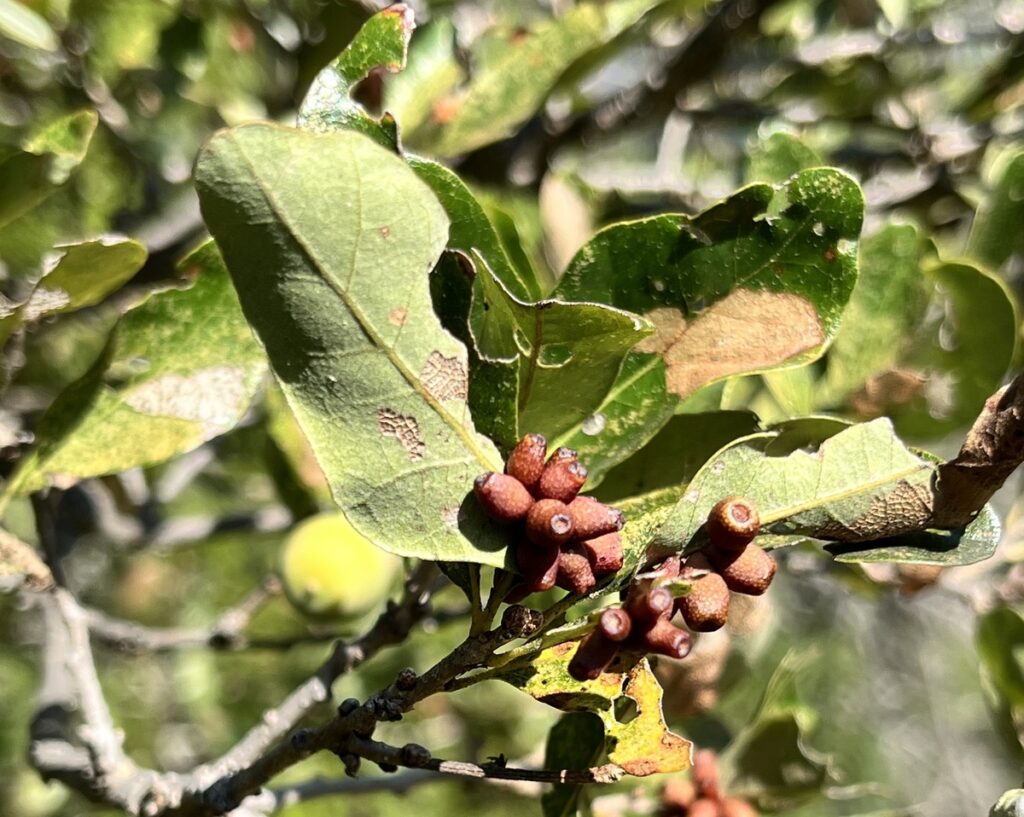
Galls are growths that occur on leaves, twigs, and roots of trees. They are caused by insects, mites, fungi, or bacteria. They can vary in shape, size, and texture. Galls form due to colonization, egg-laying, or feeding of the gall-forming organism. The gall itself is the tree’s response to the organism. The tree forms the gall, and the organism lives inside. Galls often grow as the organism grows. The biology of galls is highly variable, dependent on the gall-forming organism, the tree species, and where the gall is located on the tree.
Management is rarely needed as the presence of galls is rarely fatal to the tree. Infected trees may lose leaves, have twig mortality, have a reduction of fruit or nut production, or, in extreme cases, weaken the tree. In most cases, natural enemies control populations of gall-forming organisms. Galls and infected tissues can be manually removed from the tree. Pesticides can be used but are generally not recommended as timing of application is critical for control.